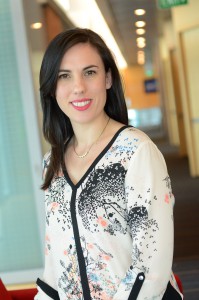Clair Deevy manages Microsoft’s Community Affairs and ‘Citizenship’ programs in Asia. Among her responsibilities are Community Technology Skills Program, NGO IT capacity building and Employee Engagement programs. The Community Technology Skills Program offers a comprehensive approach to broadening digital inclusion by bringing together critical components, including training grants, software donations, community learning curricula.

Technology has long been a male-dominated industry. While the scale has tipped slightly – 27 percent of IT professionals today are women – there is more to be done to bridge the gender gap. Clair Deevy, Microsoft’s Citizenship Lead for Asia Pacific, explains why government, education and community leaders should inspire more young women to enter the IT field – and how.
Deevy’s love for technology started from an early age. When her father saw her interest in a Commodore 64, a popular home computer model in the 1980s and he bought her a children’s introduction book on programming. While Deevy did not grow up to be software developer, her fearless attitude towards technology led her to pick up new skills that empowered her in her career, from managing websites to designing basic programmes that make work faster and more efficient.
Growing the IT talent pool
Speaking from experience, Deevy strongly believes that learning to code opens up a world of opportunities. “Technology is extremely pervasive today. It impacts all fields such as health, education, manufacturing, banking, retail and more. Approximately 65 percent of jobs in the world that require programming skills are actually outside of the technology industry. If we want to prepare our students for the workforce, all of them should be taught coding in school,” she said.
Several governments have recognised the importance and benefit of introducing computer programming to young students. The Infocomm Development Authority of Singapore (IDA), for example, announced plans in January to incorporate programming classes as part of the primary school curriculum.
“Some teachers find technology daunting, let alone programming. I was really inspired by Code.org who has done an amazing job to make computer programming accessible. They have created great teaching resources that make it less intimidating for teachers to teach coding in a way that is fun for students, and still goes toward achieving learning outcomes,” Deevy added.
One of the biggest challenges governments around the world are facing today is the lack of IT professionals. If they are serious about growing this talent pool, they must not miss out on the female half of the population.
Addressing gender stereotyping
“At a recent YouthSpark event, I met Ivo, a 22-year-old Costa Rican girl, who is passionate about technology and has been building applications. She was recounting her first day of university when her professor, who thought that computing was only a boy’s field, questioned what she was doing in his class!” said Deevy.
Gender stereotyping and the lack of female role models are obstacles that have to be addressed. “Are there women who have roles in technology who can inspire our young girls? In school, are we encouraging female students to play with technology and explore technology careers?” she asked.
Deevy is one of the ambassadors for the ‘Girls to Pioneer’ campaign led by the Singapore Committee for UN Women, the United Nations entity for gender equality and the empowerment of women. The Girls to Pioneer programme aims to encourage more young girls to consider taking up careers in Science, Technology, Engineering and Mathematics (STEM).
Besides generating interest in STEM and developing skills related to these fields, the young participants will get to meet role models like Deevy who share their experiences and challenges when attempting to navigate these male dominated sectors.
Encouraging girls to explore tech careers
School and community leaders should create awareness around the broad range of jobs in technology. “Not every IT role involves programming all day or even sitting at a desk. We need to help young women understand there are huge opportunities in music, design, communications, marketing and many other fields that an understanding of computer science can help them excel at,” she said.
Microsoft has a number of initiatives targeting young women of different age groups. As part of Microsoft’s YouthSpark programme, the DigiGirlz global initiative gives high school girls the opportunity to learn about careers in technology, and participate in hands-on computer and technology workshops.
More than 2,000 participants around the world, representing more than 50 universities in 11 countries participated in Microsoft’s second annual International Women’s Hackathon, which took place in April. Young women gathered to come up with innovative solutions using technology to help solve the world’s challenges.
“Microsoft recently supported a global event called ‘Hour of Code’ in partnership with Code.org, where we encouraged everyone to learn the basics of computer science. Microsoft Korea took that opportunity to organise a full-day programme called ‘Pink Hour of Code’, to encourage girls to try out programming,” said Deevy.
“There are many programmes out there that government and school leaders can tap on to start inspiring the young women in their communities to explore technology. Programming can be fun and easy, try it yourself today at the WeSpeakCode website or find out how you can get support to start your own initiatives,” she concluded.
Report: Kelly Ng




